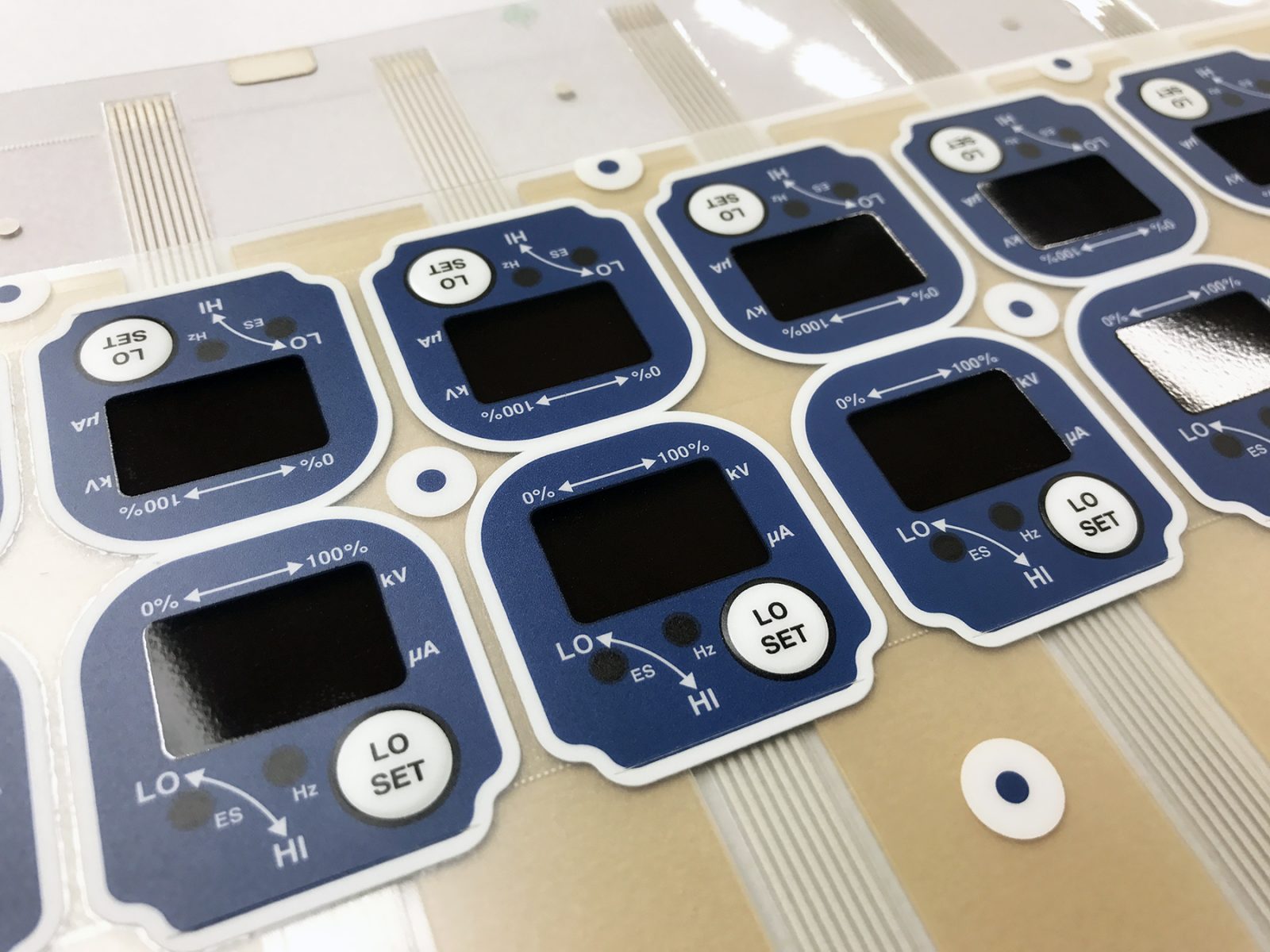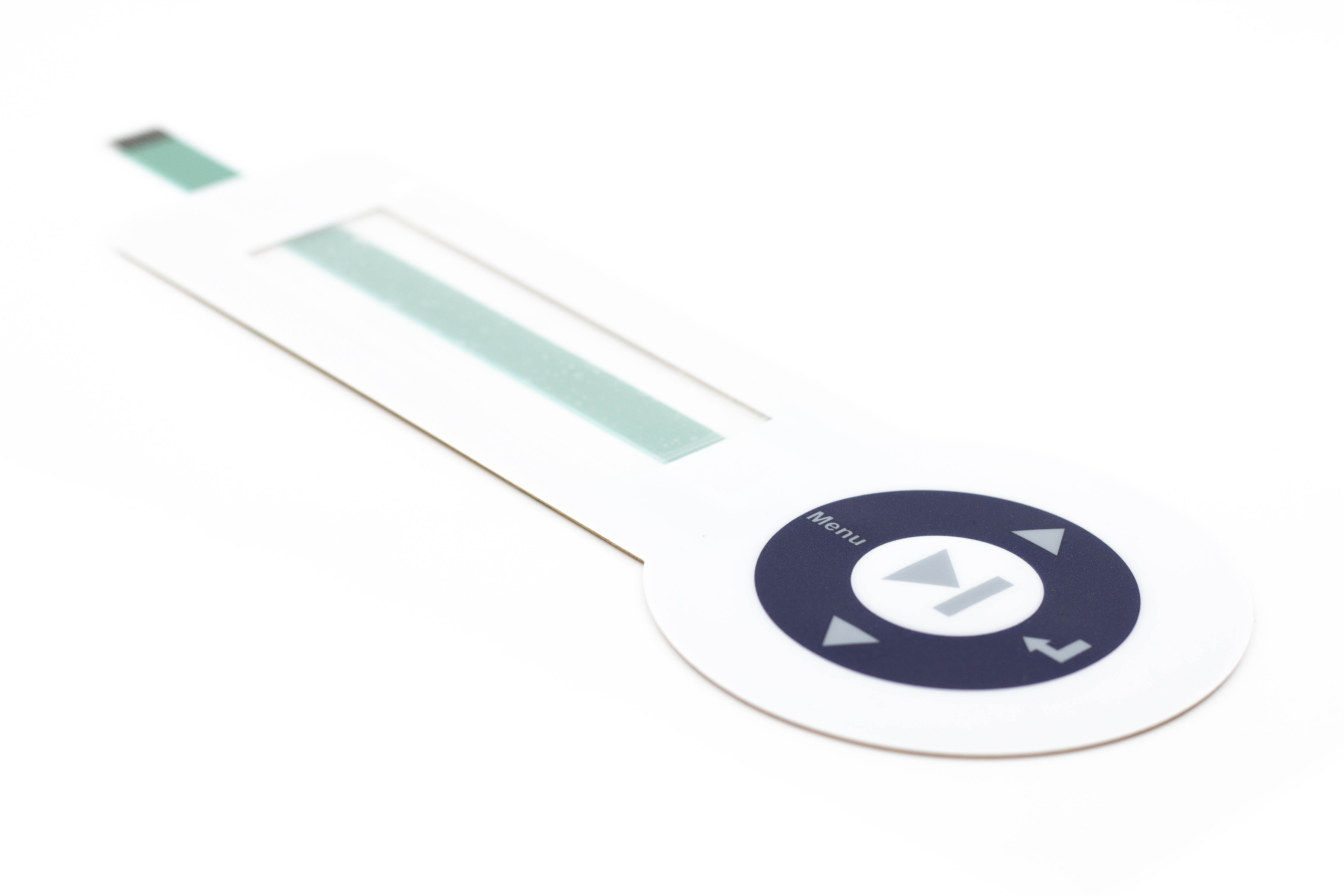Choosing the Right Membrane Switches for Your Product’s Needs
Choosing the Right Membrane Switches for Your Product’s Needs
Blog Article
Understanding the Value of Membrane Switches in User Interfaces
Membrane buttons are essential parts in the design of effective customer interfaces, assisting in not just capability but also enhancing aesthetic appeal and customer communication. As we explore the future patterns and different benefits associated with Membrane technology, it ends up being clear that these buttons are a lot more than simply components; they represent a merging of development and practicality.
What Are Membrane Buttons?

The spacer layer, which contains glue residential properties, enables the separation of the circuit layer from the overlay, guaranteeing that the button stays in a non-activated state up until pressed. When stress is applied to the overlay, it compresses the spacer layer, linking the void and finishing the circuit in the underlying layer. This layout not only minimizes the physical space needed for standard mechanical buttons however likewise boosts the toughness of the gadget, as Membrane switches are typically resistant to dirt, moisture, and other ecological aspects.
Typically discovered in applications ranging from customer electronics to clinical gadgets, Membrane switches are important to contemporary technology, giving a easy to use and efficient user interface that aligns with modern design demands.
Benefits of Membrane Buttons
While countless button modern technologies exist, Membrane Switches offer distinctive benefits that make them especially preferable in different applications. Among the key advantages of Membrane switches is their compact design, which allows for space-saving executions in tools where actual estate is limited. Their thin account not just improves aesthetic appeal yet likewise assists in lightweight building and construction.
An additional considerable advantage is their resistance to environmental elements. Membrane buttons are typically secured against moisture, dust, and impurities, making them optimal for use popular atmospheres, such as medical tools and industrial devices. This toughness prolongs the life-span of the button, decreasing upkeep costs and enhancing dependability.
In addition, Membrane buttons can be tailored to satisfy certain style demands, incorporating distinct graphics and shades that improve user communication. Their responsive feedback options can also be customized to offer an enjoyable individual experience. In addition, Membrane buttons are cost-efficient, particularly in high-volume applications, as they can be created efficiently.
Applications in Numerous Industries

In the consumer electronics sector, Membrane buttons prevail in gadgets such as Resources microwaves, cleaning equipments, and remote controls. Their responsive feedback and visual alternatives boost user experience while providing a smooth, modern-day appearance. In addition, automobile manufacturers make use of Membrane switches in control panel controls and infotainment systems, where room is restricted, and individual involvement is essential.
Additionally, the industrial industry leverages Membrane switches in control panels for equipment and tools, permitting user-friendly procedure in commonly severe atmospheres. Their resistance to chemicals and moisture makes certain long life and reliability in these applications. On the whole, the versatility of Membrane Switches adds significantly to their extensive usage, making them essential in various technological domain names.
Design Factors To Consider for Membrane Buttons

When developing Membrane buttons, browse this site numerous key factors to consider must be taken right into account to make sure optimal functionality and individual experience. To start with, the choice of materials is important; picking sturdy, top quality substrates can improve the button's longevity and resistance to environmental variables such as wetness and temperature level variations.
Second of all, the layout of the visuals overlay ought to prioritize clarity and ease of usage. Symbols and text should be readable, and the design needs to facilitate intuitive interaction (membrane switches). In addition, responsive feedback is important; integrating a tactile dome or various other mechanisms can enhance the user experience by offering physical confirmation of activation
An additional important element is the switch's electrical efficiency. Developers should guarantee that the conductive traces are effectively designed to minimize resistance and avoid signal interference. This includes evaluating the needed actuation pressure and making certain compatibility with the digital components they will interface with.

Future Patterns in Membrane Innovation
As modern technology continues to advance, Membrane switches are positioned to advance considerably, driven by technologies in products and manufacturing strategies. One arising fad is visit this page the unification of advanced materials, such as adaptable substratums and conductive inks, which boost resilience and decrease the total weight of Membrane buttons. These products not only boost the responsive feedback but also allow for the style of buttons that can withstand harsher ecological problems.
In addition, the combination of touch-sensitive modern technologies is changing typical Membrane Switches into more interactive interface. Capacitive touch sensing units installed within Membrane button panels can provide a much more intuitive and receptive individual experience, straightening with the growing need for sleek, modern-day styles in consumer electronics.
Furthermore, improvements in printing methods, such as electronic and 3D printing, enable fast prototyping and personalization of Membrane buttons. This flexibility allows producers to react quicker to market demands and customer preferences.
Lastly, sustainability is becoming a significant focus, with manufacturers discovering environment-friendly materials and processes. As these patterns unfold, the future of Membrane innovation promises enhanced functionality, visual charm, and ecological obligation, solidifying their function in sophisticated customer interfaces throughout different sectors.
Conclusion
In conclusion, Membrane Switches stand for a crucial part in the style of individual interfaces, integrating performance with aesthetic versatility. As innovations in technology continue, the evolution of Membrane buttons is anticipated to further fine-tune individual interfaces, driving technology and improving usability in a progressively complicated technical landscape.
Membrane switches are indispensable parts in the layout of efficient individual interfaces, facilitating not only functionality but also boosting aesthetic appeal and customer interaction.Membrane Switches offer as a crucial component in numerous customer interfaces, facilitating a seamless communication between users and digital devices.While various button technologies exist, Membrane Switches offer distinct advantages that make them especially desirable in numerous applications.Furthermore, Membrane buttons can be tailored to fulfill particular layout demands, incorporating distinct graphics and colors that boost customer communication.In conclusion, Membrane Switches stand for an essential part in the style of individual interfaces, incorporating performance with visual flexibility.
Report this page